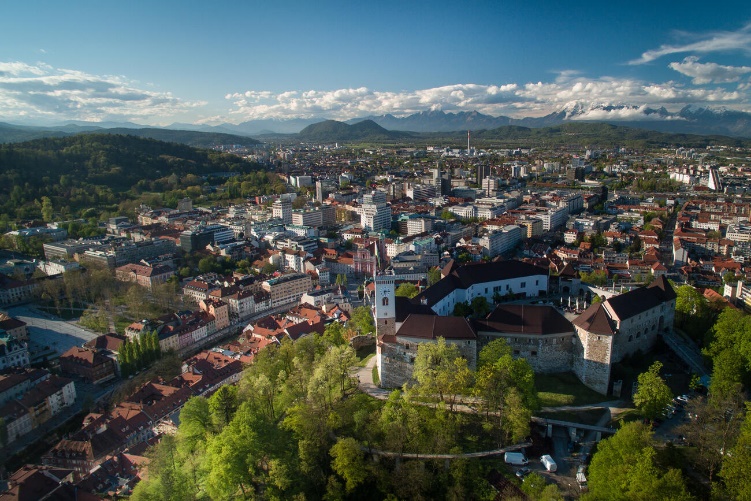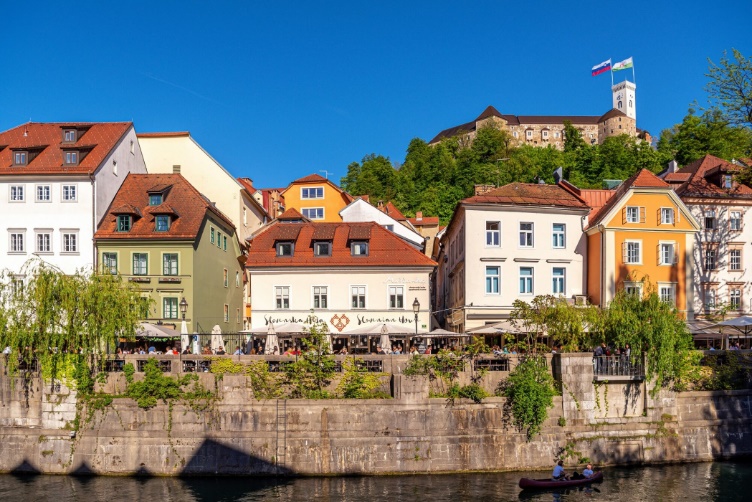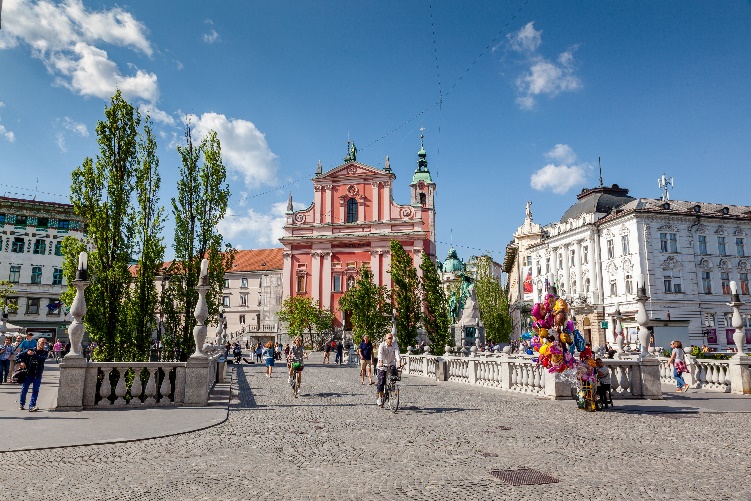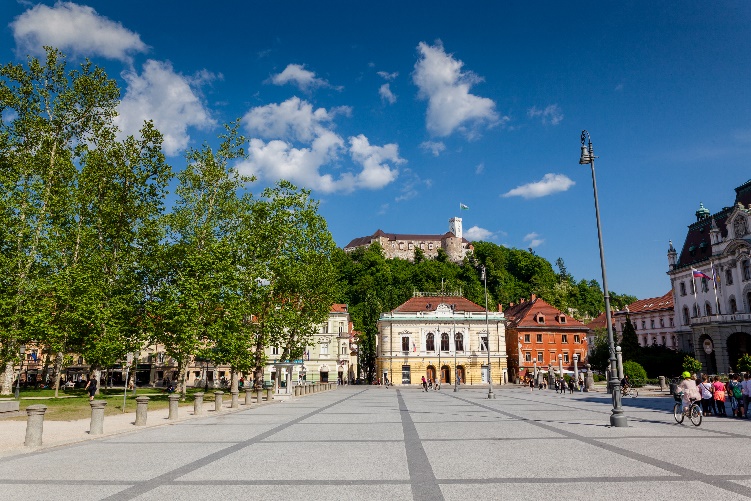Ljubljana is the capital and largest city of Slovenia, lies in the heart of Europe, hallway between the Alps and the Mediterranean Sea. Categorised as a medium-sized European city, it offers everything a metropolis does yet preserves its small-town friendliness. Ljubljana is an important European commercial, business, exhibition and congressional centre as well as the transport, science and education centre of Slovenia. It features a wealth of history, style, arts and culture, and an atmosphere that is both Central European and Mediterranean.
The European Commission has awarded Ljubljana with the prestigious title of European Green Capital 2016, while the World Travel and Tourism Council has named it winner of the Tourism for Tomorrow 2015 award in the destinations category.
Top attractions of Ljubljana are Ljubljana Castle, Plečnik’s Ljubljana, Zmanjski most (Dragon Bridge), Central Market, Prešernov trg Square with the Franciscan Church, The City Museum of Ljubljana, The Cathedral (Church of St Nicholas), National Gallery of Slovenia, Town Hall and Tivoli Park.
History and architecture
Legend has it that Ljubljana was founded by the Greek mythological hero Jason and his companions, the Argonauts, who had stolen the golden fleece from King Aetes and fled from him across the Black Sea and up the Danube, Sava and Ljubljanica rivers. They stopped at a large lake in the marsh near the source of the Ljubljanica, where they disassembled their ship to be able to carry it to the Adriatic Sea, put it together again, and return to Greece. The lake where they made a stop was the dwelling place of a monster. Jason fought the monster, defeated it and killed it. The monster, now referred to as the Ljubljana Dragon, found its place atop the castle tower on the Ljubljana coat of arms.
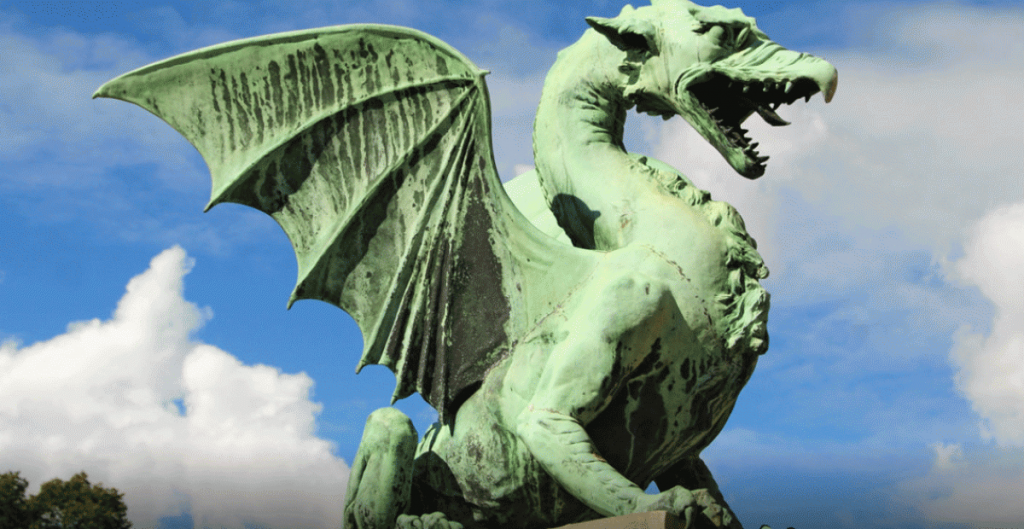
It has managed to retain traces from all periods of its rich history; from the legacy of Roman Emona; through to the Renaissance, Baroque and Art Nouveau periods characterised in the house fronts and ornate doorways of the city centre, the romantic bridges adorning the Ljubljanica river, the lopsided rooftops and a park reaching deep into the city centre. Here eastern and western cultures met; and the Italian concept of art combined with the sculptural aesthetics of Central European cathedrals.
The city owes its present appearance partly to Italian baroque and partly to Art Nouveau, which is the style of the numerous buildings erected immediately after the earthquake of 1895. In the first half of the 20th century, modern Ljubljana was shaped by the strong personal style of Jože Plečnik, a great European architect and a local of Ljubljana. The cityscape was complemented by his modernist followers as well as by creations of the “New Wave” of acknowledged young architects. All the different facets of Ljubljana blend harmoniously into a single image.
University
University of Ljubljana (https://www.uni-lj.si/eng/) is the oldest and largest higher education and scientific research institution in Slovenia. University with its rich tradition was founded in 1919. It has approximately 41,000 undergraduate and postgraduate students and employs approximately 6,000 higher education teachers, researchers, assistants and administrative staff in 23 faculties and three arts academies. The University of Ljubljana ranks among the top 3% of universities in the world. The University of Ljubljana is renowned for its quality social and natural sciences and technical study programmes, structured in accordance with the Bologna Declaration. Our projects keep pace with the latest developments in the areas of arts, sciences and technology at home and abroad.
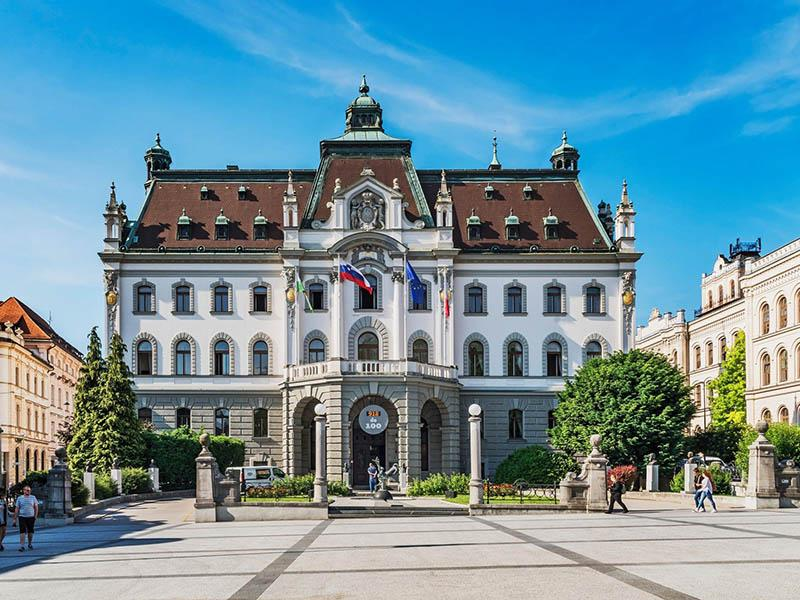
Climate
The climate of Ljubljana is continental, with cold winters and warm summers. Ljubljana is located in the central-western part of the country, at an altitude of 300 meters (1,000 feet). The Alps are to the north and the Carso to the south. The average temperature of the coldest month (January) is of 0 °C (32 °F), that of the warmest month (July) is of 21 °C (70 °F). The best times to visit Ljubljana are spring and autumn, and in particular, the months of May, June and September.
HOW TO GET TO LJUBLJANA
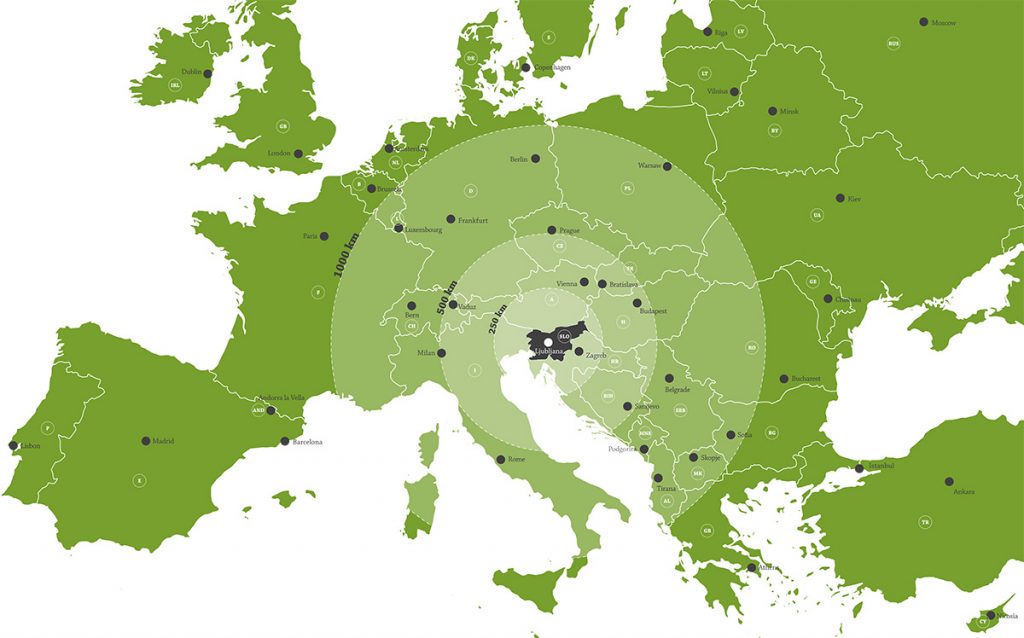
Getting to Ljubljana by air
Ljubljana Jože Pučnik Airport is located 26 kilometres to Ljubljana (20 minutes by road).
Transfers to/from the airport:
- Shuttle transfers: GoOpti, Nomago, MNJ Shuttle, Markun Shuttle, ZUP prevozi.
- Taxi: Taxi services are available in front of the airport building.
- Rent-a-car: consult the list of rent-a-car service providers at the airport.
- Regular bus route (https://www.ap-ljubljana.si/en/) connects the Ljubljana Jože Pučnik Airport and the Ljubljana Central Bus Station (bus stop no. 28).
Distances to other near airports:
- Airport Klagenfurt, Austria: 85 km
- Airport Trieste, Italy: 130 km
- Airport Zagreb, Croatia: 140 km
- Airport Graz, Austria: 187km
- Airport Venice, Italy: 230km
Several airports within reasonable distance to Ljubljana are served by low-fare carriers. Favourably priced scheduled transfers from these airports and Ljubljana Jože Pučnik Airport can be booked through: https://www.goopti.com/en/, https://shuttle.nomago.si/en/routes
Getting to Ljubljana by road
Ljubljana is located at the crossroads of Slovenia’s most important road routes. Motorway access from any of the neighbouring countries is very easy. Road tax vignettes must be purchased for the use of Slovenian motorways, including the Ljubljana bypass. Vignettes can be purchased at petrol stations located in the border areas of Slovenia’s neighbouring countries, at petrol stations, post offices and most newspaper kiosks in Slovenia, and at branch offices of the Automobile Association of Slovenia (AMZS) and other automobile clubs.
https://www.dars.si/vignette_system/about_the_vignette The Traffic Information Centre for Public Roads collects and provides information on traffic and road conditions in Slovenia https://www.promet.si/portal/en/1traffic-conditions.aspx.
Getting to Ljubljana by train
The Ljubljana Railway Station is Slovenia’s main railway station. It connects Ljubljana to Trieste, Frankfurt, Munich, Zurich, Prague, Vienna, Graz, Budapest, Zagreb, and Belgrade. Railway is also a convenient means of transport within Slovenia, given that distances within the country are mainly short and travel costs low. https://potniski.sz.si/en/
Getting to Ljubljana by bus
The Ljubljana Bus Station has regular services to all Slovenia’s neighbouring countries and the most popular tourist destinations within the country. Bus tickets can be purchased at the counter of the Ljubljana Bus Station or online from the Ljubljana Bus Station website.
European cities served by direct bus routes from Ljubljana: Trieste, Venice (Mestre, Marco Polo Airport), Florence, Milan, Klagenfurt, Vienna, Munich, Dortmund, Paris, Budapest, Zagreb, Sarajevo, Belgrade, Niš, Sofia. https://www.ap-ljubljana.si/en/
